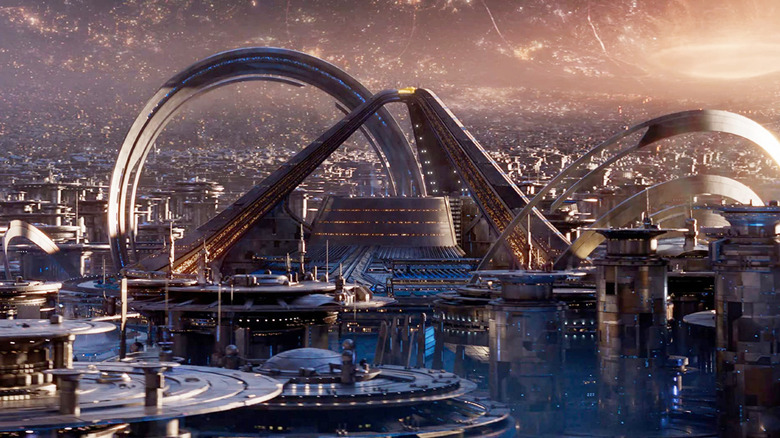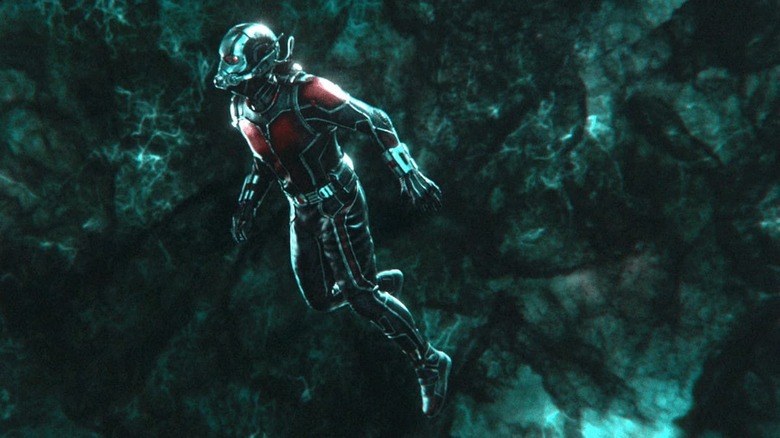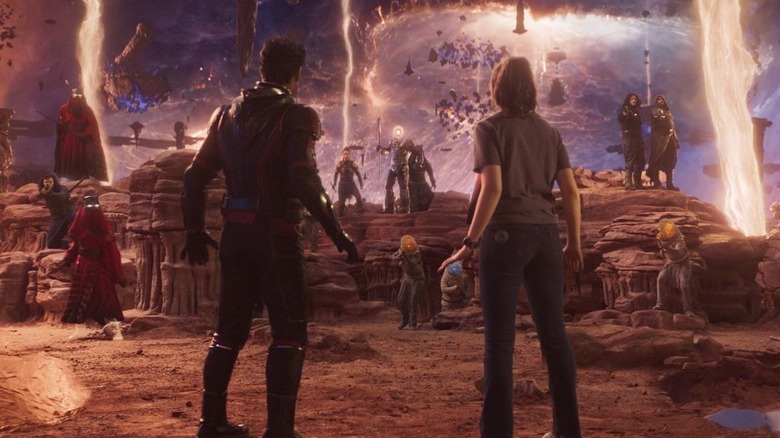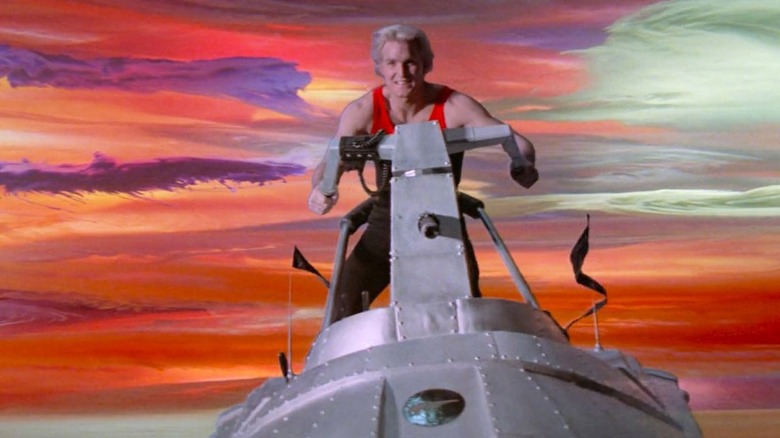The Quantum Realm In Ant-Man And The Wasp: Quantumania Borrows From The Wizard Of Oz, Flash Gordon, And More
For the past couple of decades, a large number of sci-fi and fantasy films have subscribed to a relatively grounded and gritty visual aesthetic: think Syfy's "Battlestar Galactica" revival, Christopher Nolan's "Interstellar," and HBO's "Game of Thrones." Yet there was a time when sci-fi/fantasy movies and TV shows were less concerned with realism and more prone to go on flights of visual fancy, hijacking the limitless narrative possibilities of the genres in order to present realms and worlds never before seen.
Director Peyton Reed and his cast and crew of "Ant-Man and the Wasp: Quantumania" remember that time very well. With the introduction of the Quantum Realm in 2015's "Ant-Man" and its brief appearance in 2018's "Ant-Man and the Wasp," Reed and his team laid the groundwork for a world as visually unique as it is conceptually singular. In "Quantumania," they've paid off that promise, presenting a realm that draws from some of the most visually bold films ever made for inspiration. Not that Reed has left all realism behind; instead, the movie's Quantum Realm is a beguiling combination of imaginative fantasy and uncanny reality.
'It was in the works for three and a half years'
Just because we're finally seeing the Quantum Realm in full effect in "Quantumania" doesn't mean its development began when the movie started production. Similar to another fully-fleshed out, visually striking alien world — Pandora in "Avatar: The Way of Water" — the Quantum Realm began life quite a ways in advance.
In a press conference attended by /Film's Jeremy Mathai, producer Kevin Feige spoke about the long road to the Quantum Realm:
"It was in the works for three and a half years, working on this look and taking audiences to a place that they have not been before. We talked about parallels to 'The Wizard of Oz' a lot, in terms of taking and meeting a family down there. But the visuals, which have been in the works for a very long time, was all Peyton and his team."
Reed then went on to explain how he and the film's artists approached such a daunting, years-long task:
"We just wanted to assemble a team of artists and say 'We're creating the Quantum Realm,' you know. None of the other Marvel movies have really dealt with it, and we wanna create this very vivid world that has its own internal history, internal logic. [...] Will Htay, our production designer, we assembled this insane group of visual artists, and we said, 'Just bring some of your most fantastic ideas to the table and let's figure out what it can be.'"
A whole new world, a new fantastic point of view
Some of those fantastic ideas for the Quantum Realm didn't necessarily have to come from sci-fi and fantasy works, but rather the real science behind the world beneath our feet — or, er, our fingernails, to be more accurate.
As Peyton Reed explained, he and his team looked at real photos taken with an electron microscope, images that were as strange and inspirational as any fantasy film:
"[The electron microscope] takes things that are so, so incredibly small, and then you print them out and they look like landscapes. And it does set your mind thinking, which is where all of our minds had to be, which is like, all of this movie is taking place in your fingernails somewhere. Like, it's this subatomic world. All of this stuff is going on in the fabric of spacetime, outside of space and time but in the quantum realm. [...] We needed to do something, you know, that really felt vast."
For the cast's part, star Paul Rudd commented on how the real inspirations for the film's visual aesthetic made the entire movie feel more believable:
"It's pretty crazy, actually. Because we have no idea what is this going to look like when we started. Going into Marvel, and seeing some of those photographs on the wall, I thought 'Wow, these are incredible mock-ups, like what? This is the craziest landscape.' And [Reed] saying, 'No, no. That's actually an electron microscope. That really is what it looks like.' And so, when you really start thinking [about it], it doesn't even seem like it's that much of an embellishment."
Quantumania was influenced by 'all these sort of whacked-out things'
Though real-life science and photography played an integral part in designing the Quantum Realm, Peyton Reed was particularly interested in the opportunity to bring back an old-school sci-fi/fantasy vibe, one that used to be seen on screens as well as on store shelves. As he elaborated:
"We really drew from a lot of stuff. 'Flash Gordon.' 'Barbarella.' All these sort of whacked-out things. Really looking at the covers of old science-fiction paperbacks, from the '60s and '70s and into the '80s. There are a lot of great artists who would paint the covers for these things, and they would be in the newsstand and that cover had to grab you, and a lot of them were creating these really strange worlds that, if you were looking at paperbacks, that one would pull you in. You may not even know what the story is, but that visual."
One other major influence that Reed namechecked was the classic sci-fi fiction/comic strip/illustration magazine Heavy Metal, particularly its run during the '70s and 80s (a run that influenced its own big-screen animation adaptation, "Heavy Metal," in 1981). He also mentioned that the Quantum Realm "has a little sword and sorcery element [to it]" and "a real Moebius element" involved as well, referencing the French artist Jean "Moebius" Giraud, whose work frequently appeared in the pages of — you guessed it — Heavy Metal.
While the movie itself and its place within the larger Marvel Cinematic Universe remains to be seen when it opens on February 17, 2023 it seems "Quantumania" will undoubtedly be a feast for the eyes, especially for those of us who believe that the more "whacked-out," the better.



